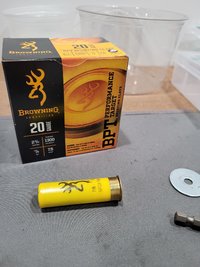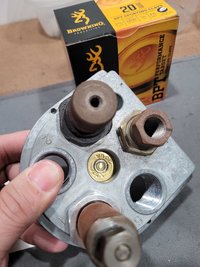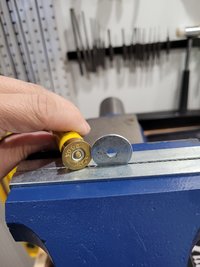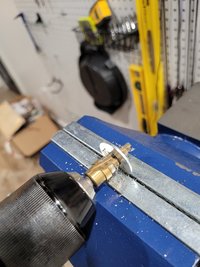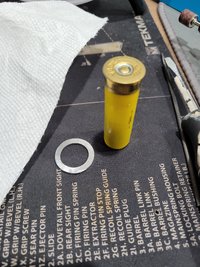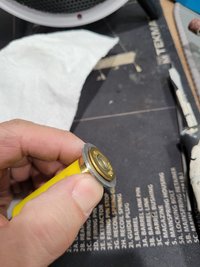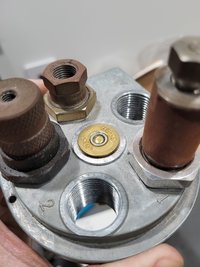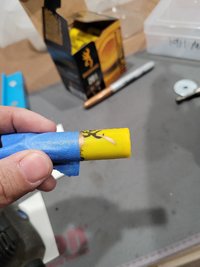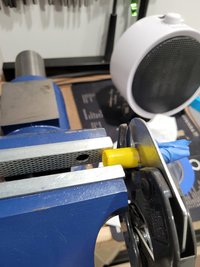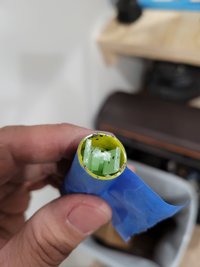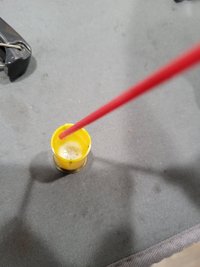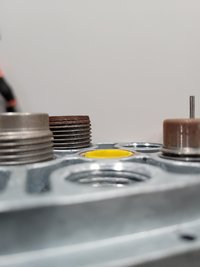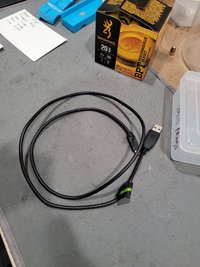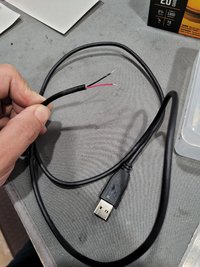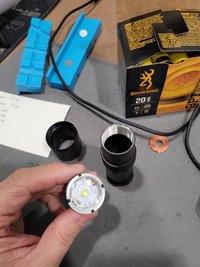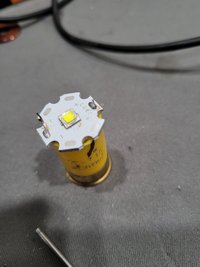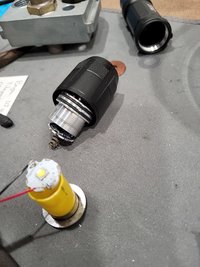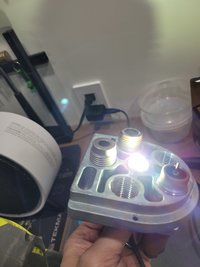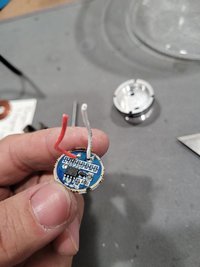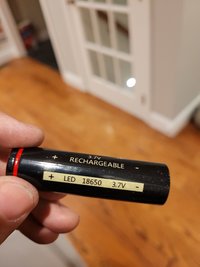beaker
NES Member
I made this for a Dillon xl650 press, but it should work in any progressive reloading press, you might have to make some mods. Progressive presses are great, but they have a large turret or tool head which blocks all available light like a black hole - which makes it difficult to see what is going on inside. I like making stuff, and didn't want to spend $35-40 on a light so I found a suitable bulb and went from there.
SEE POST #10 ON A BETTER WAY TO MAKE THE BODY OF THE LIGHT USING A 20G Shotgun Shell casing! A LOT EASIER AND FREE!
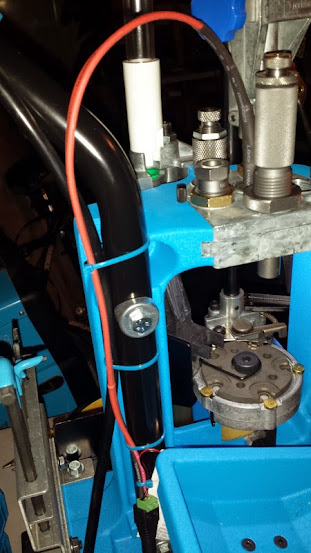

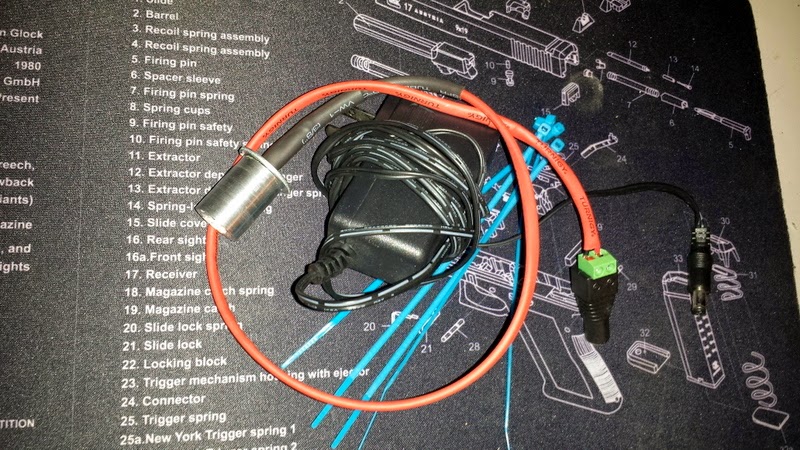
The bulbs are pretty cheap, and I had many of the components and tools needed to make the light, you can adapt the idea and basic concept. I bought the bulbs and connectors on eBay. I had the shrink tubing already, most of it from Harbor Freight.
So here are the materials and tools you need to do this.
Tools
Soldering Iron
Heat Gun
Hot Glue Gun and Sticks
Misc hand Tools - wire cutter, wire stripper, razor knife, screwdrivers, scissors etc.
Hand Drill (or a drill press)
Vice
Step Drill bit with 15/32 and 3/8"
1/2" Drill Bit
Materials
LED Bulb - I got this one that came with 10
( http://www.ebay.com/itm/111403644190?ssPageName=STRK:MEWNX:IT&_trksid=p3984.m1439.l2649 )
These are the same but 4 of them
( http://www.ebay.com/itm/261512253147?ssPageName=STRK:MEWNX:IT&_trksid=p3984.m1439.l2649 )
DC Power Connectors (5.1mm Female) You could use other means as well (different connectors, solder the wires together, etc.)
(http://www.ebay.com/itm/221450501242?ssPageName=STRK:MEWNX:IT&_trksid=p3984.m1439.l2649 )
Aluminum Spacer (0.750" x 1")
( http://www.mcmaster.com/#92510a360/=swv6p0 )
Shrink Tubing
3/8" - Harbor Freight - Black
1 @ 1.25"
1 @ 2"
1 @ 5"
11/64" - Harbor Freight - Red
3mm - I had this, need to procure some around the same size RED and BLACK
1@15"
Wire
14 Gauge Stranded - RED and BLACK - DON'T USE SOLID WIRE. 16 Gauge would work fine as well, nothing bigger than 14 though.
1 RED @ 18" - Strip ONE END 1/2"
1 BLACK @ 18" - Strip ONE END 1/2"
14 Gauge is what I had, but it gives the cord just the right amount of stiffness once it is all shrinked IMO. 16 Gauge would likely be good as well.
Washer
Lowes - pack of 4 - $1.00 - 8mm x 24 is just the right size
Everything to assemble the light.
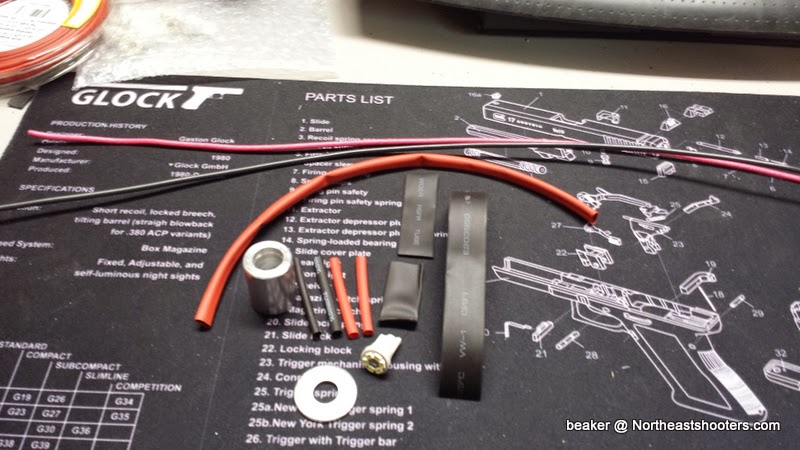
MAKING THE ALUMINUM BODY
The hardest part is modding the aluminum spacer. If you have a lathe and some stock, you could make this out of Aluminum, Brass, Plastic, or steel if you have the right tooling. I did this using a hand drill and a vice.
I looked through my tools to find something close to the bulb diameter.
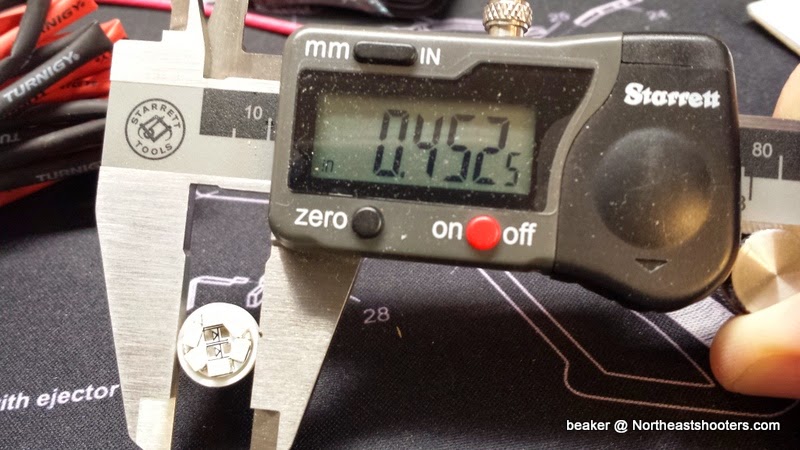
I used a hand drill, you could use your drill press if you have one, which would actually be better, but mine is buried and I can't get to it at the moment. Plus, I wanted to show how to make it with minimal tools.
Keep in mind that this isn't a valve job on a BMW engine so close enough is good enough.
I found that this step drill with its 15/32 diameter step is just perfect, and eats the aluminum spacer like Hillary Clamton on a ... well that's for another time. I put the tape marker on the drill to eyeball the depth. I went full depth on the 15/32 step.

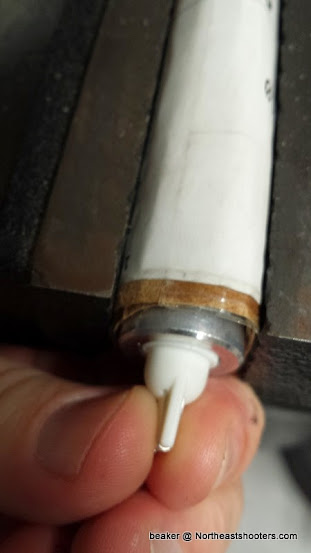
Here is what it looks like after the step drill. Also note high tech corrugated sleeve protector used to clamp the spacer in the vice...

While you have the step drill in, open up the washer ID to 3/8". Then turn it around and use the step drill to remove the huge burr on the other side of the washer.

Once you get the bulb end drilled, turn the spacer around and drill it from the back with a 1/2" drill. You have to be careful and stop the drill before you drill into the 15/32" diameter (just shy) per the sketch below. I don't have a picture of the 1/2" drill, it was so blurry it reminded of me of the night I drank way to many Kamikazes and ended up sleeping under a tree. Shudder.
You can probably just drill 1/2" through the spacer and skip the step drill if you don't mind the poor fit around the bulb.
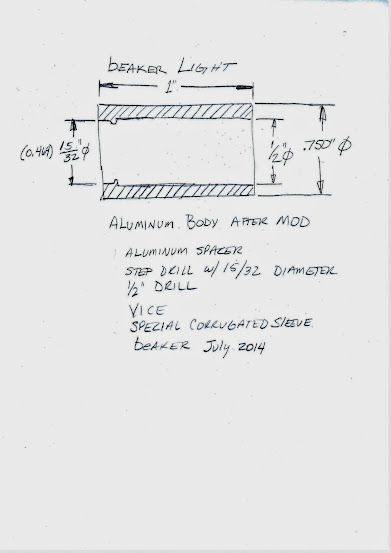
When you are done, it hopefully looks like this.
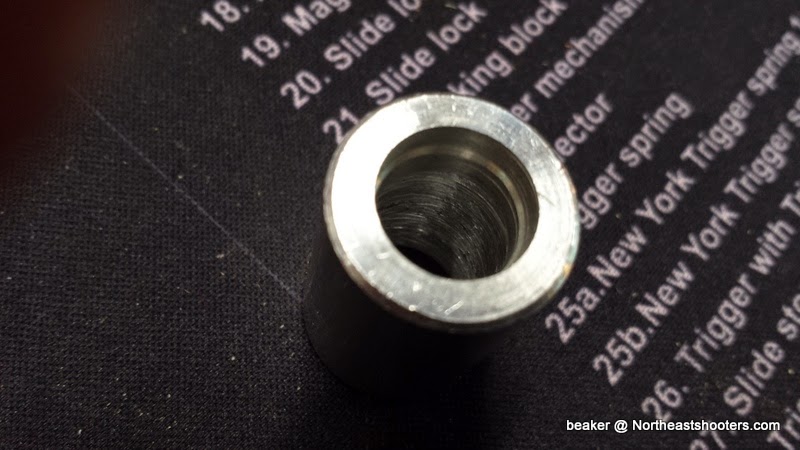

Back end with the 1/2" diameter hole.

There is just one problem with the spacer. The diameter is 0.750"+ and the diameter of the hole in the tool head is smaller than that. If you have a lathe, no problem, shave off 0.010 or 0.020. I used some hardware I had to make up a holding jig to spin the spacer and used some 100 and 200 grit emory cloth to take off some material on the diameter. It is doable, but be careful.

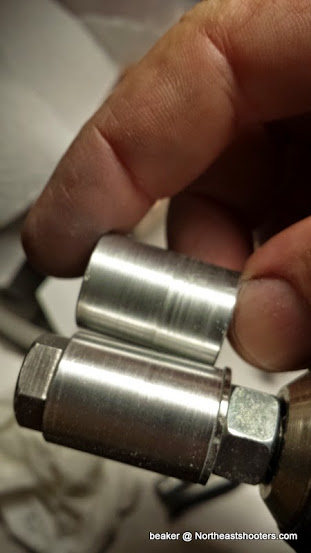
The rest will be in additional posts.
SEE POST #10 ON A BETTER WAY TO MAKE THE BODY OF THE LIGHT USING A 20G Shotgun Shell casing! A LOT EASIER AND FREE!


The bulbs are pretty cheap, and I had many of the components and tools needed to make the light, you can adapt the idea and basic concept. I bought the bulbs and connectors on eBay. I had the shrink tubing already, most of it from Harbor Freight.
So here are the materials and tools you need to do this.
Tools
Soldering Iron
Heat Gun
Hot Glue Gun and Sticks
Misc hand Tools - wire cutter, wire stripper, razor knife, screwdrivers, scissors etc.
Hand Drill (or a drill press)
Vice
Step Drill bit with 15/32 and 3/8"
1/2" Drill Bit
Materials
LED Bulb - I got this one that came with 10
( http://www.ebay.com/itm/111403644190?ssPageName=STRK:MEWNX:IT&_trksid=p3984.m1439.l2649 )
These are the same but 4 of them
( http://www.ebay.com/itm/261512253147?ssPageName=STRK:MEWNX:IT&_trksid=p3984.m1439.l2649 )
DC Power Connectors (5.1mm Female) You could use other means as well (different connectors, solder the wires together, etc.)
(http://www.ebay.com/itm/221450501242?ssPageName=STRK:MEWNX:IT&_trksid=p3984.m1439.l2649 )
Aluminum Spacer (0.750" x 1")
( http://www.mcmaster.com/#92510a360/=swv6p0 )
Shrink Tubing
3/8" - Harbor Freight - Black
1 @ 1.25"
1 @ 2"
1 @ 5"
11/64" - Harbor Freight - Red
3mm - I had this, need to procure some around the same size RED and BLACK
1@15"
Wire
14 Gauge Stranded - RED and BLACK - DON'T USE SOLID WIRE. 16 Gauge would work fine as well, nothing bigger than 14 though.
1 RED @ 18" - Strip ONE END 1/2"
1 BLACK @ 18" - Strip ONE END 1/2"
14 Gauge is what I had, but it gives the cord just the right amount of stiffness once it is all shrinked IMO. 16 Gauge would likely be good as well.
Washer
Lowes - pack of 4 - $1.00 - 8mm x 24 is just the right size
Everything to assemble the light.

MAKING THE ALUMINUM BODY
The hardest part is modding the aluminum spacer. If you have a lathe and some stock, you could make this out of Aluminum, Brass, Plastic, or steel if you have the right tooling. I did this using a hand drill and a vice.
I looked through my tools to find something close to the bulb diameter.

I used a hand drill, you could use your drill press if you have one, which would actually be better, but mine is buried and I can't get to it at the moment. Plus, I wanted to show how to make it with minimal tools.
Keep in mind that this isn't a valve job on a BMW engine so close enough is good enough.
I found that this step drill with its 15/32 diameter step is just perfect, and eats the aluminum spacer like Hillary Clamton on a ... well that's for another time. I put the tape marker on the drill to eyeball the depth. I went full depth on the 15/32 step.


Here is what it looks like after the step drill. Also note high tech corrugated sleeve protector used to clamp the spacer in the vice...

While you have the step drill in, open up the washer ID to 3/8". Then turn it around and use the step drill to remove the huge burr on the other side of the washer.

Once you get the bulb end drilled, turn the spacer around and drill it from the back with a 1/2" drill. You have to be careful and stop the drill before you drill into the 15/32" diameter (just shy) per the sketch below. I don't have a picture of the 1/2" drill, it was so blurry it reminded of me of the night I drank way to many Kamikazes and ended up sleeping under a tree. Shudder.
You can probably just drill 1/2" through the spacer and skip the step drill if you don't mind the poor fit around the bulb.

When you are done, it hopefully looks like this.


Back end with the 1/2" diameter hole.

There is just one problem with the spacer. The diameter is 0.750"+ and the diameter of the hole in the tool head is smaller than that. If you have a lathe, no problem, shave off 0.010 or 0.020. I used some hardware I had to make up a holding jig to spin the spacer and used some 100 and 200 grit emory cloth to take off some material on the diameter. It is doable, but be careful.


The rest will be in additional posts.
Last edited:


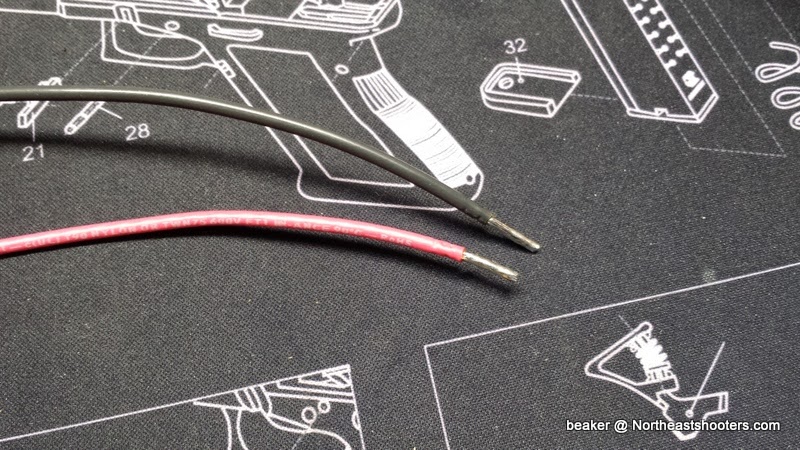

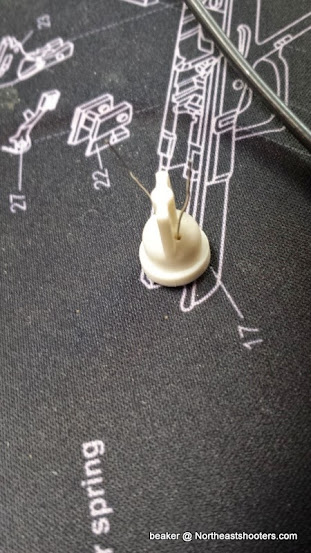

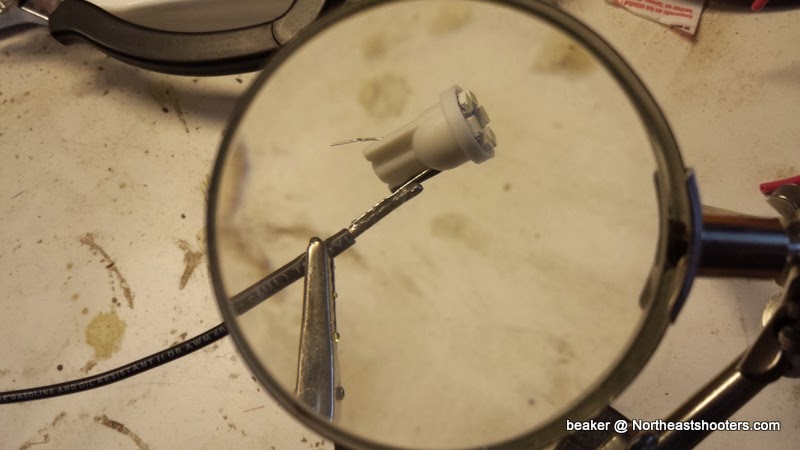



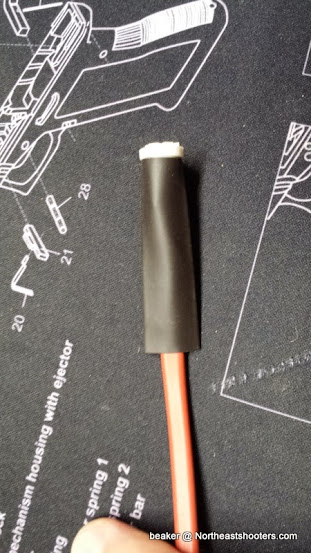


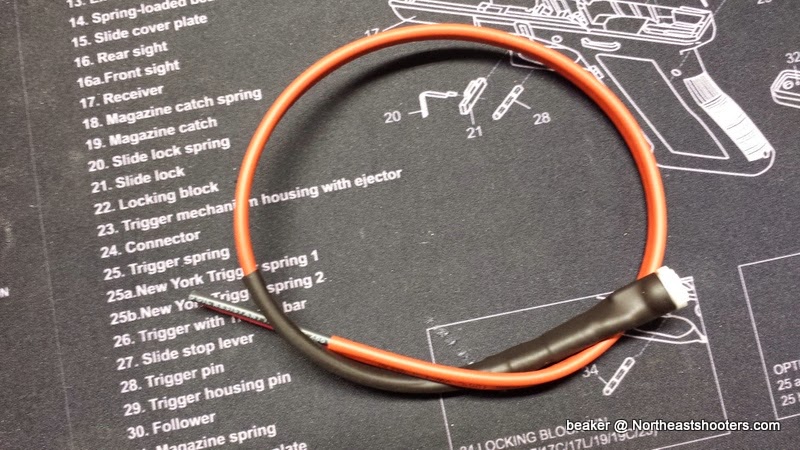
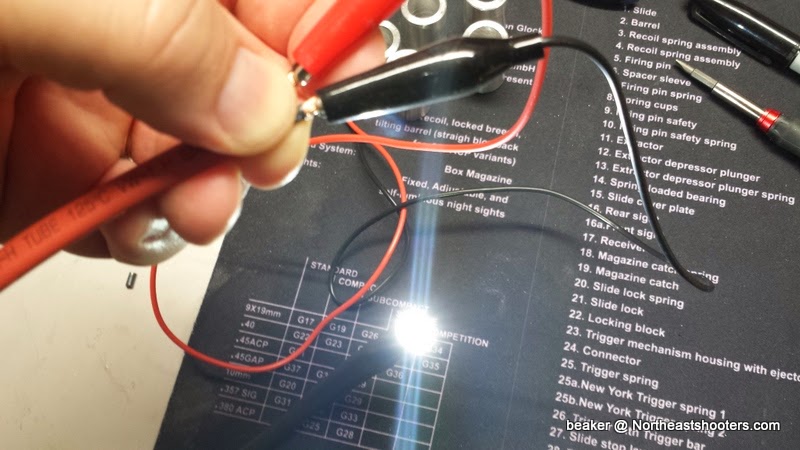
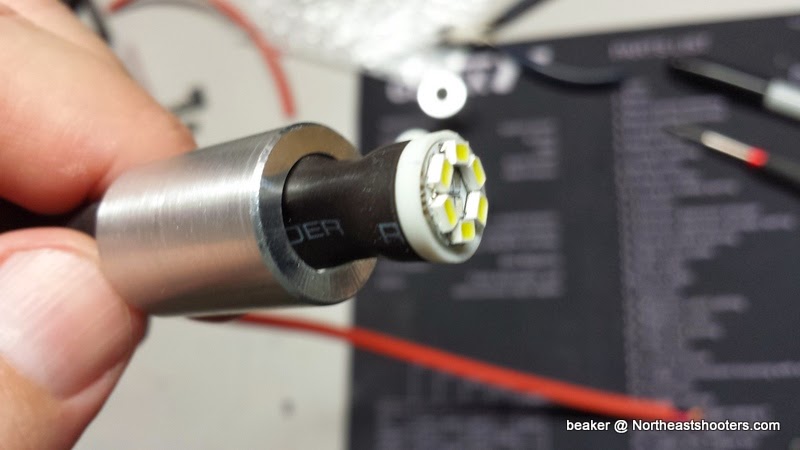
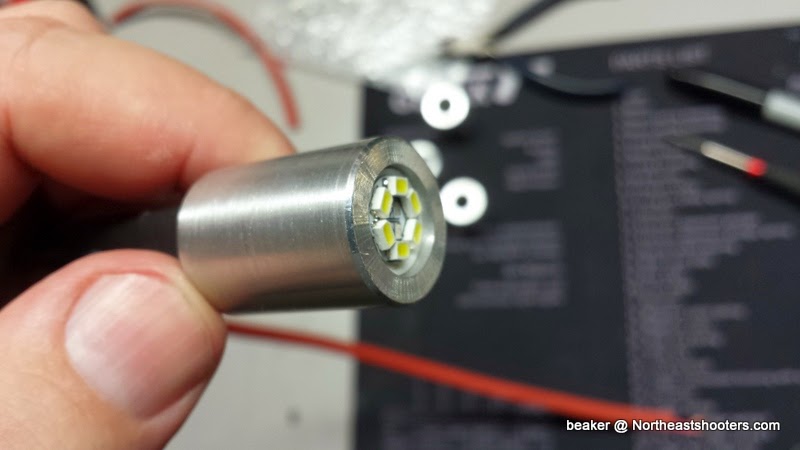
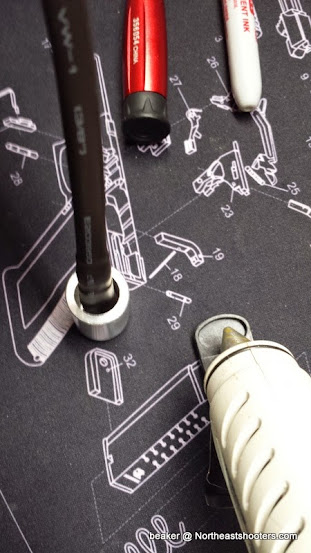
![Wink [wink] [wink]](/xen/styles/default/xenforo/smilies.vb/002.gif)
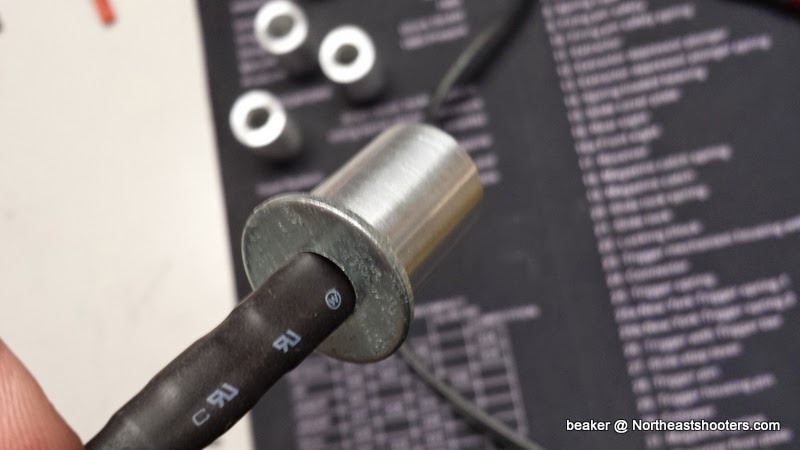

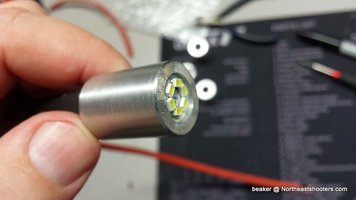
![Smile [smile] [smile]](/xen/styles/default/xenforo/smilies.vb/001.gif)

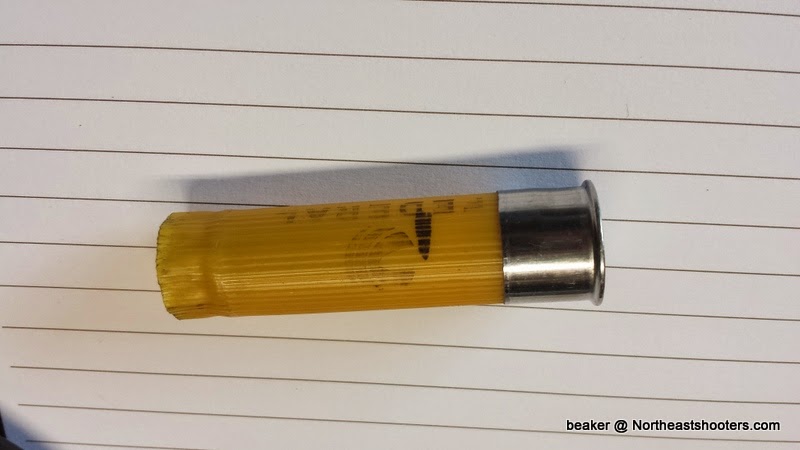



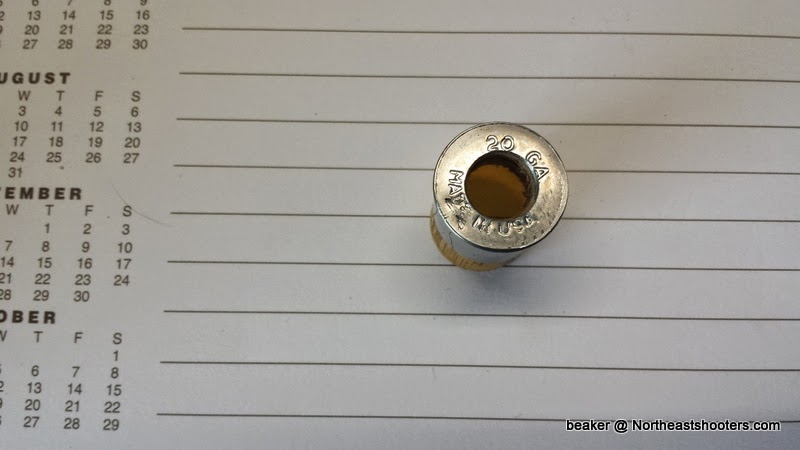


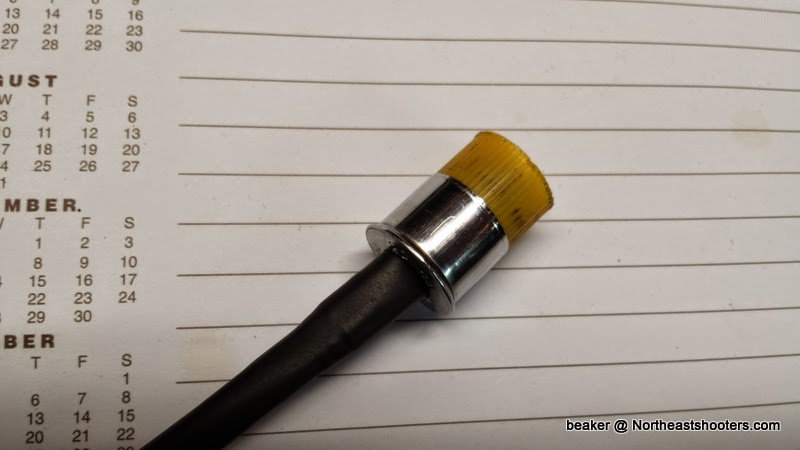

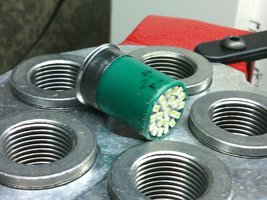
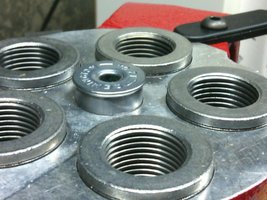
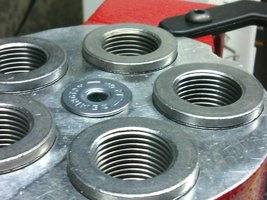
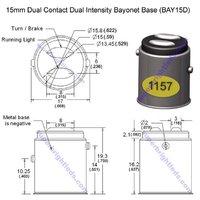
![Thumbs Up [thumbsup] [thumbsup]](/xen/styles/default/xenforo/smilies.vb/044.gif)
